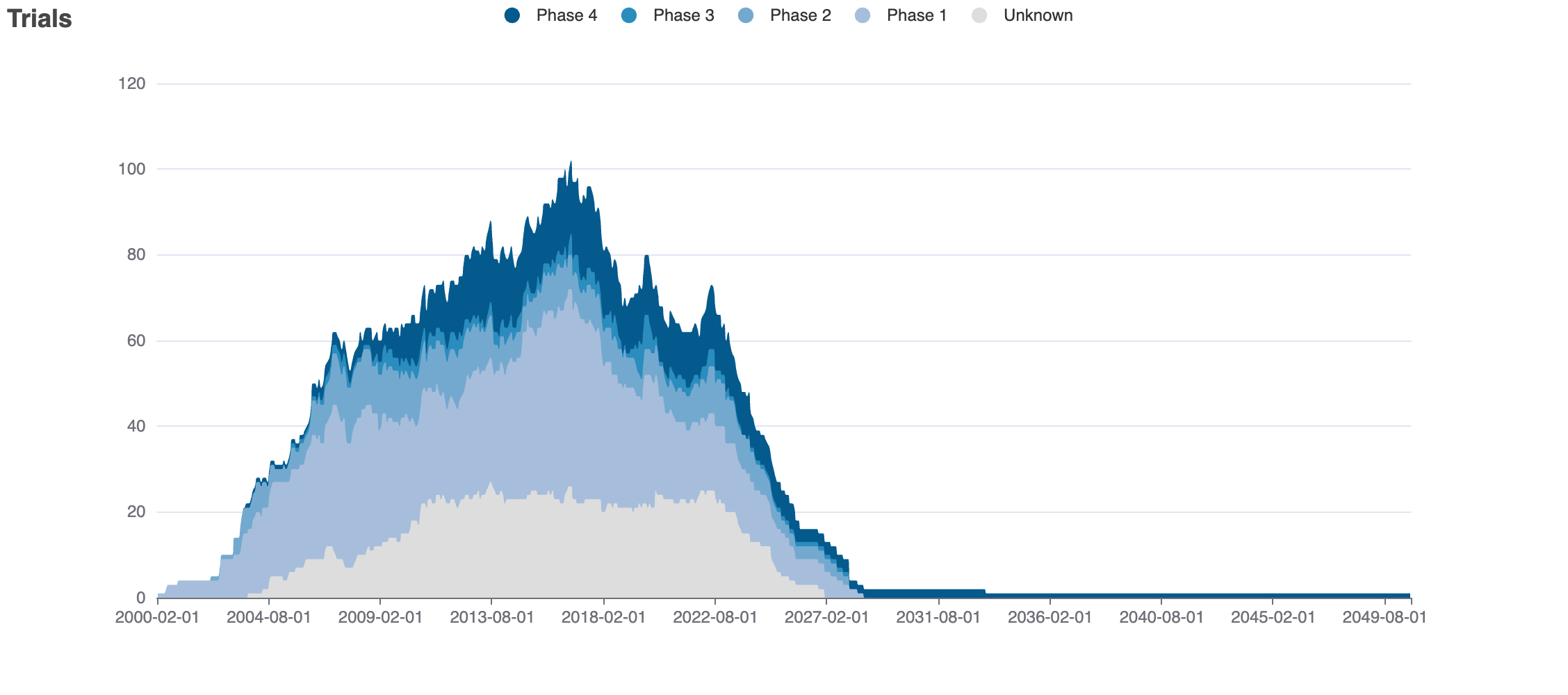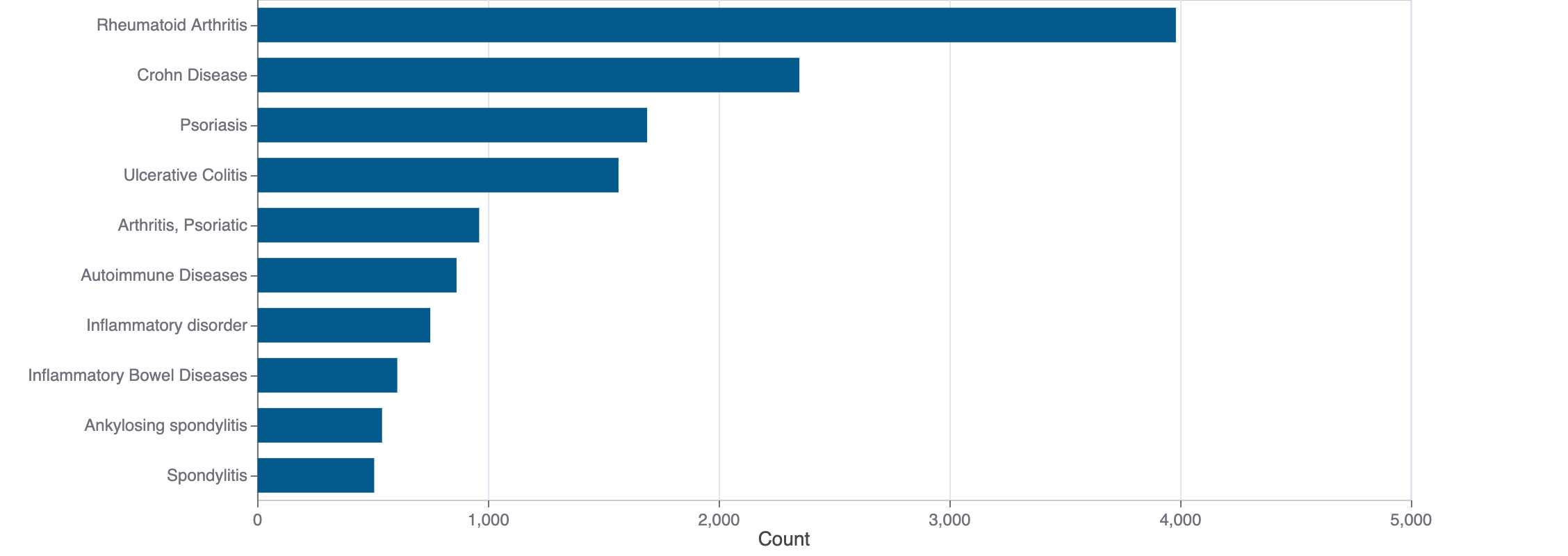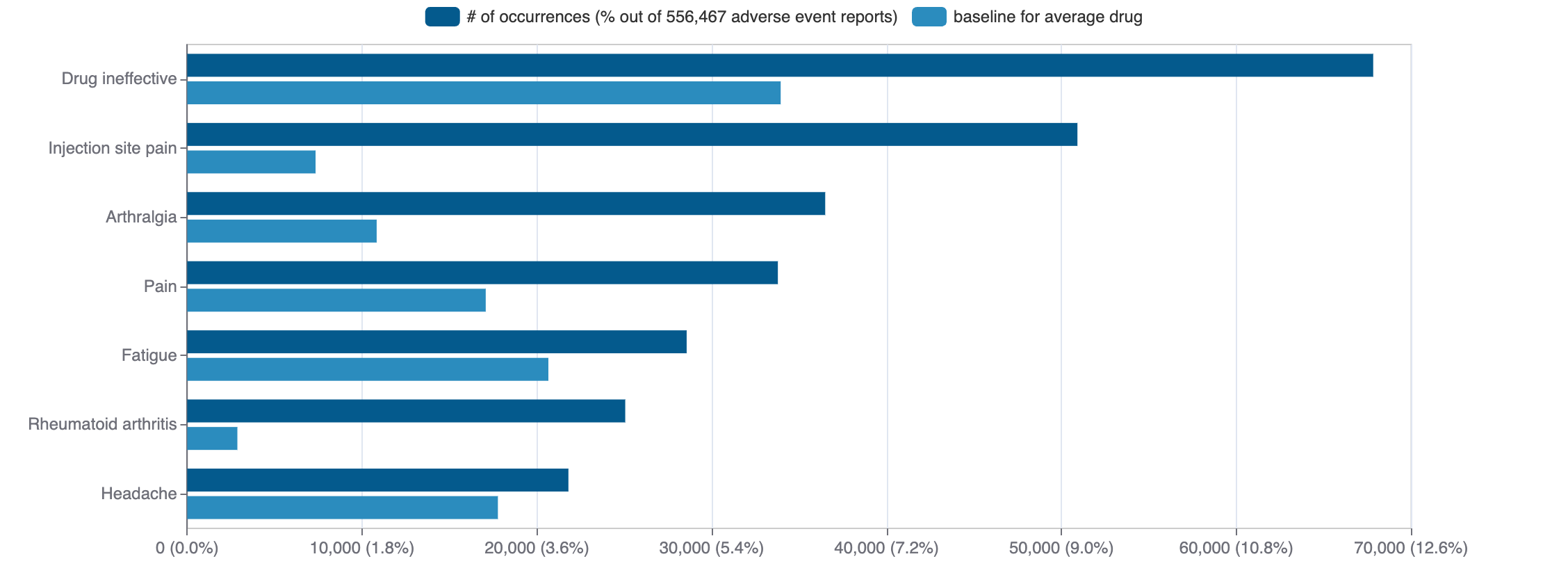Linifanib
Linifanib is a small molecule pharmaceutical. It is currently being investigated in clinical studies.
Download report
Favorite
Events Timeline
Commercial
Clinical
Drug
Target
Variants
Financial
Trends
Safety
Events Timeline
5D
1M
3M
6M
YTD
1Y
2Y
5Y
Max
Events
FDA approval date
EMA approval date
Patent expiration date
Study first post date
Last update post date
Start date
Primary completion date
Completion date
Results first post date

Mock data
Subscribe for the real data
Subscribe for the real data
Commercial
No data
Clinical
Clinical Trials
20 clinical trials
View more details

Mock data
Subscribe for the real data
Subscribe for the real data
Indications Phases 4
No data
Indications Phases 3
Indication | MeSH | Ontology | ICD-10 | Ph 1 | Ph 2 | Ph 3 | Ph 4 | Other | Total |
|---|---|---|---|---|---|---|---|---|---|
| Neoplasms | D009369 | — | C80 | 6 | — | 1 | — | — | 7 |
| Liver diseases | D008107 | EFO_0001421 | K70-K77 | — | — | 1 | — | — | 1 |
| Carcinoma | D002277 | — | C80.0 | — | — | 1 | — | — | 1 |
| Hepatocellular carcinoma | D006528 | — | C22.0 | — | — | 1 | — | — | 1 |
| Gastrointestinal neoplasms | D005770 | — | C26.9 | — | — | 1 | — | — | 1 |
| Digestive system neoplasms | D004067 | — | — | — | — | 1 | — | — | 1 |
| Gastrointestinal diseases | D005767 | — | — | — | — | 1 | — | — | 1 |
| Liver neoplasms | D008113 | EFO_1001513 | C22.0 | — | — | 1 | — | — | 1 |
| Adenocarcinoma | D000230 | — | — | — | — | 1 | — | — | 1 |
| Neoplasms by histologic type | D009370 | — | — | — | — | 1 | — | — | 1 |
Show 3 more
Indications Phases 2
No data
Indications Phases 1
No data
Indications Without Phase
No data
Epidemiology
Epidemiological information for investigational and approved indications
View more details
Drug
General
| Drug common name | Linifanib |
| INN | linifanib |
| Description | Linifanib is a member of the class of phenylureas that is urea in which one of the nitrogens is substituted by a 2-fluoro-5-methylphenyl group, while the other is substituted by a p-(3-amino-1H-indazol-4-yl)phenyl group. It is a potent, selective inhibitor of vascular endothelial growth factor and platelet-derived growth factor receptor tyrosine kinases. It has a role as an antineoplastic agent, an EC 2.7.10.1 (receptor protein-tyrosine kinase) inhibitor and an angiogenesis inhibitor. It is an aromatic amine, a member of indazoles and a member of phenylureas. |
| Classification | Small molecule |
| Drug class | angiogenesis inhibitors |
| Image (chem structure or protein) |  |
| Structure (InChI/SMILES or Protein Sequence) | Cc1ccc(F)c(NC(=O)Nc2ccc(-c3cccc4[nH]nc(N)c34)cc2)c1 |
Identifiers
| PDB | — |
| CAS-ID | 796967-16-3 |
| RxCUI | — |
| ChEMBL ID | CHEMBL223360 |
| ChEBI ID | — |
| PubChem CID | 11485656 |
| DrugBank | — |
| UNII ID | CO93X137CW (ChemIDplus, GSRS) |
Target
No data
Variants
No data
Financial
No data
Trends
PubMed Central
Top Terms for Disease or Syndrome:

Mock data
Subscribe for the real data
Subscribe for the real data
Additional graphs summarizing 984 documents
View more details
Safety
Black-box Warning
No Black-box warning
Adverse Events
Top Adverse Reactions

Mock data
Subscribe for the real data
Subscribe for the real data
51 adverse events reported
View more details
© 2020-2025 Collaborative Drug Discovery Inc. (CDD) | Terms of Use